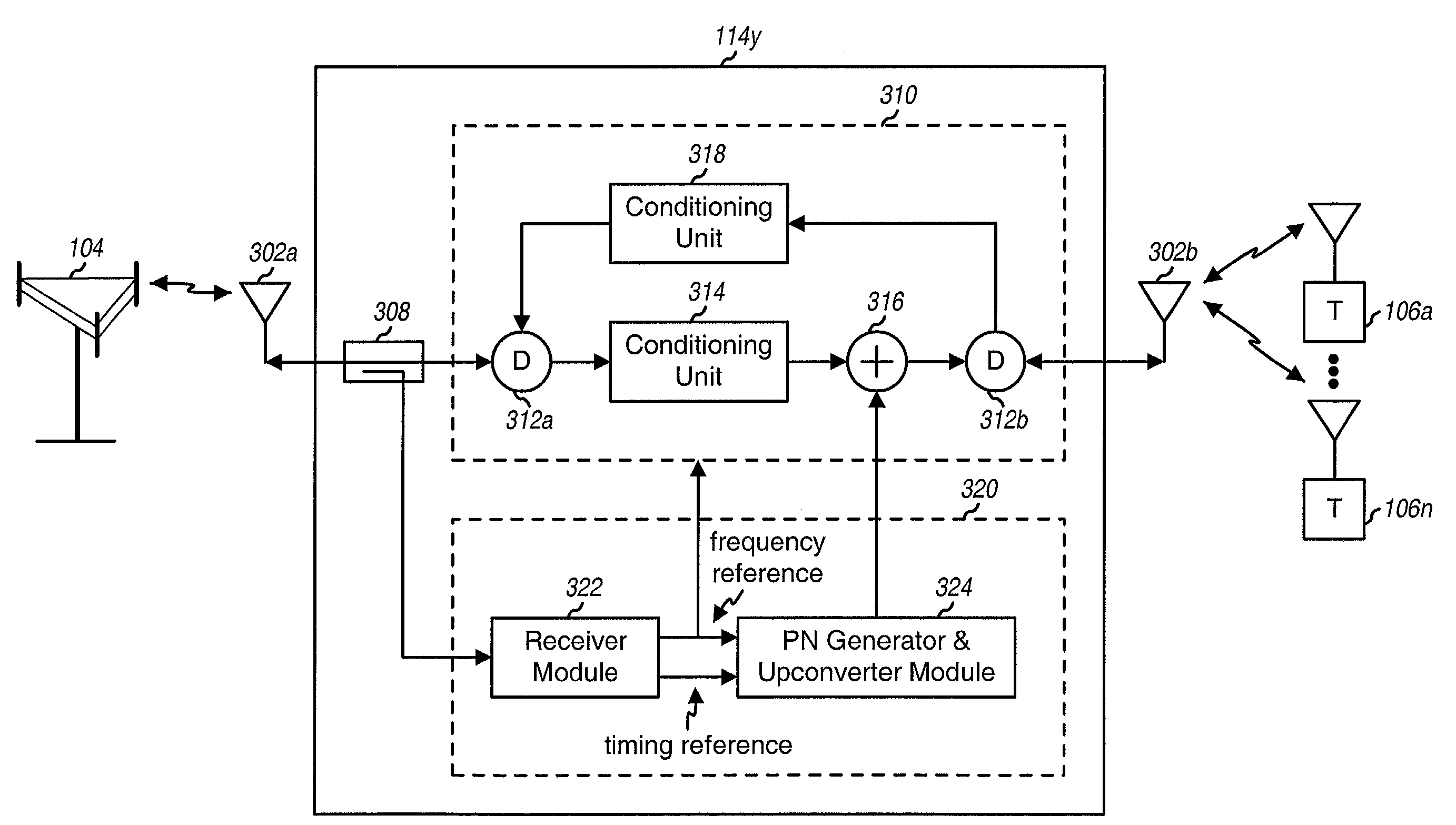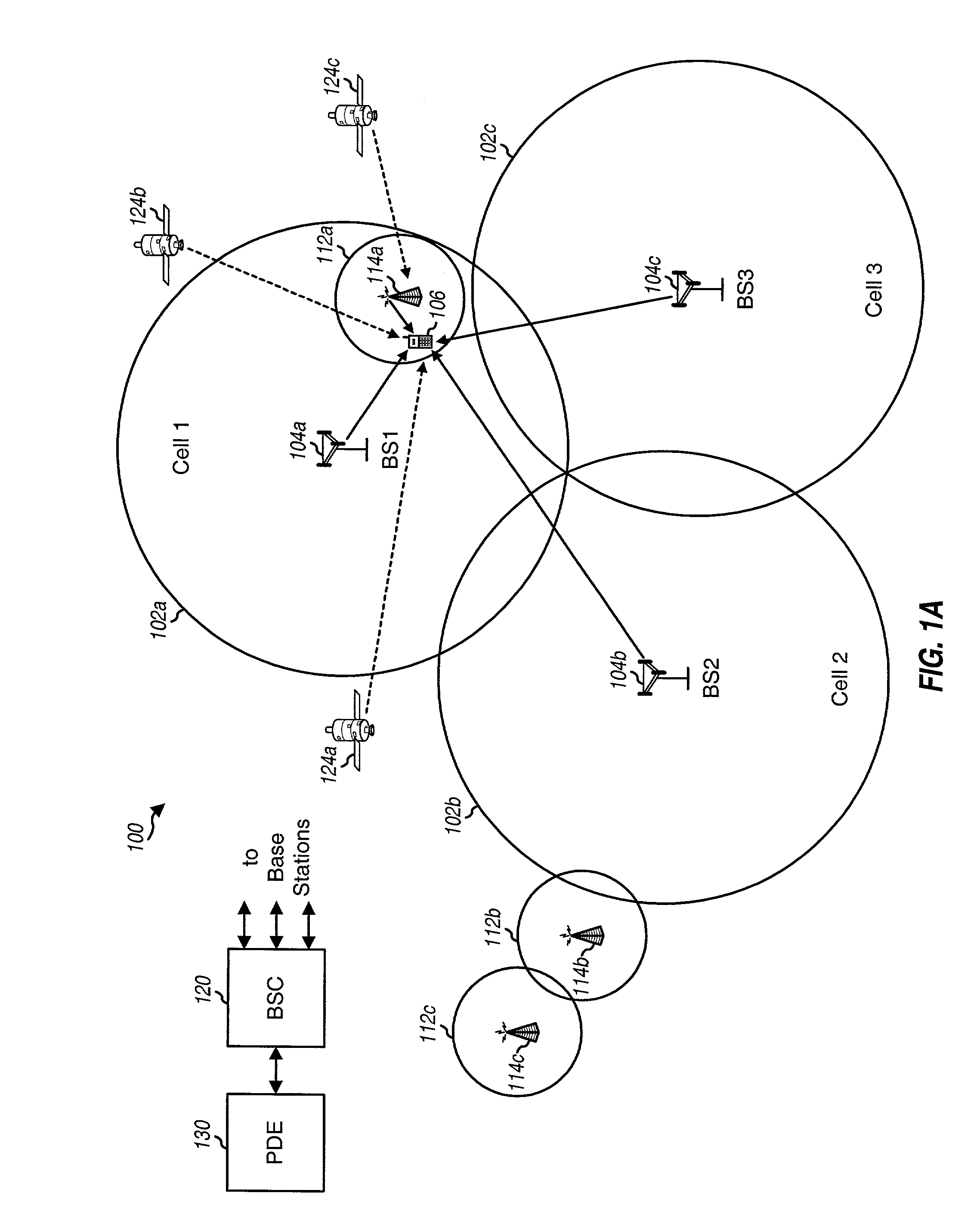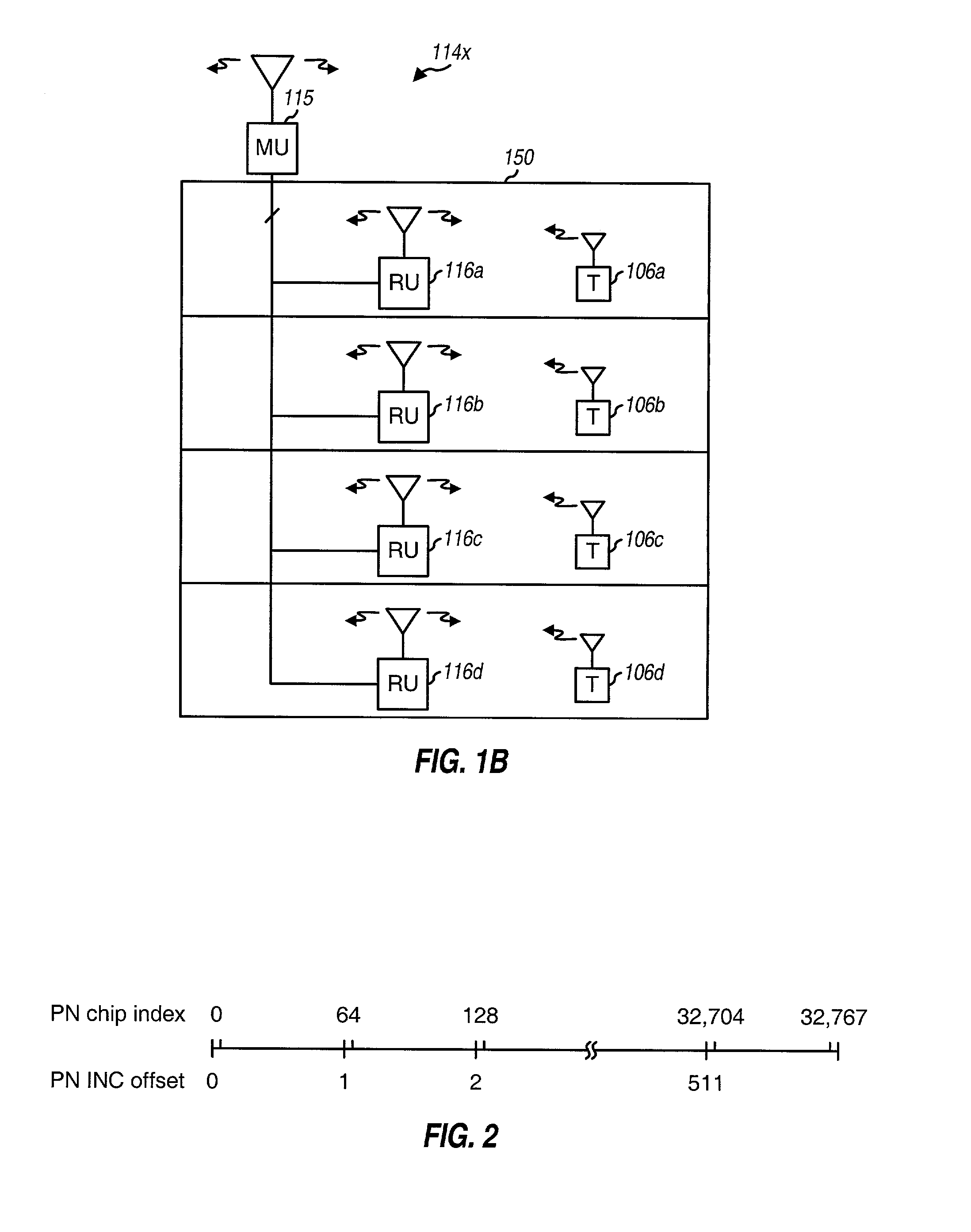Method and apparatus for estimating the position of a terminal based on identification codes for transmission sources
a technology of identification codes and terminals, applied in the field of position determination, can solve the problems of insufficient power levels of signals from gps satellites to be received by the terminal, inaccurate position estimates based on these measurements, and general limited use of gps satellites for position determination, so as to achieve a minimal impact on performance
- Summary
- Abstract
- Description
- Claims
- Application Information
AI Technical Summary
Benefits of technology
Problems solved by technology
Method used
Image
Examples
Embodiment Construction
[0039]Aspects of the disclosed method and apparatus provide techniques to determine the position of a terminal under the coverage of a repeater in a wireless communication system. In one aspect, techniques are provided for each repeater to send an identification code that can be used by the terminal (or the PDE) to ascertain the repeater's identity. This information can then be used to estimate the position of the terminal, as described below.
[0040]It is recognized by the disclosed method and apparatus that repeaters used to provide indoor coverage are typically designed to cover relatively small geographical areas (e.g., a building, a floor of the building, and so on). In an embodiment, since the coverage area of a repeater is typically small, the position estimate for a terminal under the repeater's coverage can be reported as a designated location within this coverage area, which may be the center of the coverage area. In many (if not most) cases, this reported position estimate ...
PUM
 Login to View More
Login to View More Abstract
Description
Claims
Application Information
 Login to View More
Login to View More - R&D
- Intellectual Property
- Life Sciences
- Materials
- Tech Scout
- Unparalleled Data Quality
- Higher Quality Content
- 60% Fewer Hallucinations
Browse by: Latest US Patents, China's latest patents, Technical Efficacy Thesaurus, Application Domain, Technology Topic, Popular Technical Reports.
© 2025 PatSnap. All rights reserved.Legal|Privacy policy|Modern Slavery Act Transparency Statement|Sitemap|About US| Contact US: help@patsnap.com



